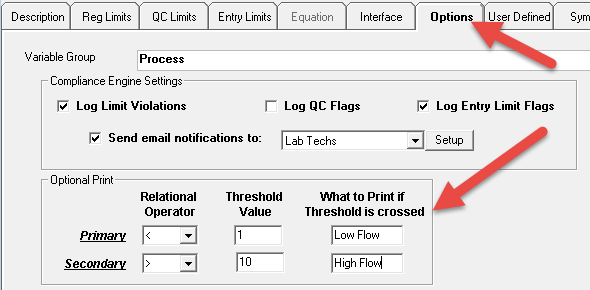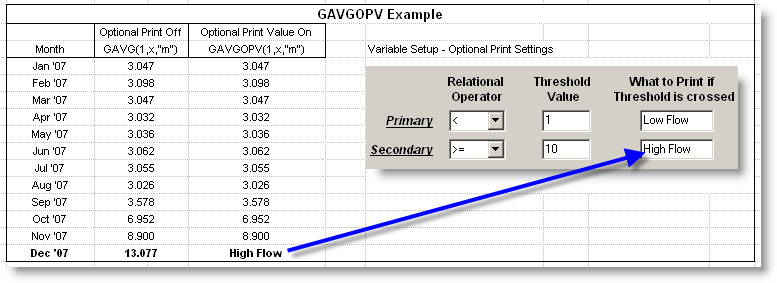
Defining Optional Print allows text to be printed on reports given the conditions specified. For example, when the flow is below 1, reports can print "Low Flow". The primary condition is checked first and if the primary threshold conditions are not crossed, the secondary condition is checked. For example, if you want the fecal coliform count to print TFTC if below 50 and to print INVALID if below 10, set up the Primary as < 10, Invalid and the Secondary as < 50, TFTC. Reports can be set up to print the optional print value or print the raw data.
FIELDS:
Relational Operator: (Primary and Secondary) is used in conjunction with the Threshold Value, to determine whether or not the Threshold Value has been crossed. A combo box allows selection of valid operators. Valid relational operators are:
< (less than)
<= (less than or equal to)
= (equal to)
>= (greater than or equal to)
> (greater than)
Threshold Value: (Primary and Secondary) The numeric threshold value is used in conjunction with the Relational Operator.
Optional Print Value: (Primary and Secondary) The Optional Print Value for "Threshold Crossings". Usually, if a Threshold Value is crossed, it is (optionally) printed on reports. It can be any string of up to 15 characters such as 'TRACE ', 'TNTC ', etc.
NOTES
Spread functions that end in OPV (such as GAVGOPV, VAROPV,...) support the use of the Optional Print value.
EXAMPLES
The following example shows a spread report displaying "High Flow" instead of the actual numeric result. See GAVGOPV for more information.

Download Example Template: Help_GAVG_Examples.ss3 (Click here for download instructions)